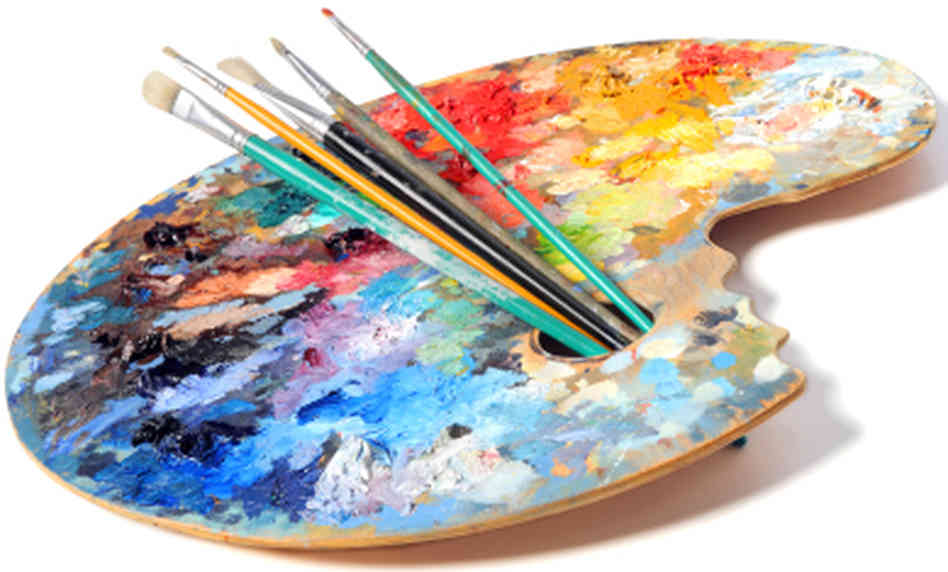Just How Trump Art Shows Modern Political Satire in the Art Globe
Just How Trump Art Shows Modern Political Satire in the Art Globe
Blog Article
Digging Into the Diverse World of Artistic Expression: From Surrealism to Abstract Realism
In the world of creative expression, from the dreamlike landscapes of surrealism to the intricate play of light and form in abstract realism, artists have constantly pressed the borders of imagination and creativity. As we explore the multifaceted world of art, we are presented with a tapestry of styles, techniques, and philosophies that test our understanding and prompt reflection.
Surrealism: Letting Loose the Subconscious
Surrealism, a progressive creative activity of the 20th century, dived right into the midsts of the subconscious, unveiling a globe of dream-like imagery and non-traditional associations. Headed by artists like Salvador Dali, René Magritte, and Joan Miró, Surrealism looked for to challenge the traditional ways of recognizing and seeing art. With strategies such as automatism and desire evaluation, Surrealist musicians aimed to take advantage of the subconscious mind to expose covert facts and needs.
One of the essential elements of Surrealism was the focus on the unreasonable and the remarkable. By combining unforeseen elements in their jobs, Surrealist artists aimed to produce a feeling of disorientation and surprise in the viewer. This interruption of reasoning and reason was indicated to provoke a deeper exploration of the subconscious and the mysteries of the human psyche.
Abstract Realistic Look: Redefining Perception
Testing traditional artistic boundaries, Abstract Realism redefines understanding via the fusion of identifiable components with abstract forms. This innovative approach to art incorporates the representational accuracy of realism with the creative flexibility of abstraction, providing visitors an unique aesthetic experience that triggers them to question their understanding of fact.
In Abstract Realistic look, musicians aim to catch the essence of their subjects while also instilling their collaborate with a sense of deepness and intricacy via abstract components. By blending the aware of the strange, these musicians welcome target markets to engage with their pieces on several levels, urging them to discover the subtleties of form, shade, and structure.

Cubism: Fragmentizing Truth
Utilizing fragmented viewpoints and geometric forms, Cubism reinvented the artistic depiction of fact in the early 20th century. Created by Pablo Picasso and Georges Braque, Cubism sought to test conventional notions of perspective and representation. By breaking down things and numbers into geometric forms and providing them from several viewpoints simultaneously, Cubist artists aimed to capture the essence of the subject instead of its literal appearance. This strategy not only deconstructed reality yet also stressed the flatness of the canvas, leading the way for future abstract art movements.

Cubism can be categorized into two primary phases: Analytical Cubism, defined by single color pattern and complex, fragmented types; and Artificial Cubism, which integrated collection aspects and brighter shades right into the structures. Via these distinctive stages, Cubism affected not only paint but likewise design, sculpture, and design. trump art. Its effect resounded across the art globe, motivating musicians to explore new methods of standing for the globe and interpreting around them
Expressionism: Feelings on Canvas
Discovering the depths of human emotions through vibrant and expressive brushstrokes, Expressionism became a profound artistic activity in the very early 20th century. Unlike previous art movements that concentrated on depicting the external globe, Expressionism explored the internal realm of the musician's subconscious, aiming to evoke raw feelings and provoke visceral actions from customers.
Expressionist artists, such as Edvard Munch, Egon Schiele, and Emil Nolde, rejected standard concepts of elegance and realistic look for distorting type and color to share subjective sensations. Making use of exaggerated brushwork, strong shades, and altered numbers aided create a feeling of unease, alienation, or interest in their jobs.
One of one of the most popular examples of Expressionism is Munch's "The Scream," which captures the extreme anxiety and anguish helpful resources of modern life through its swirling, altered figure versus a blood-red skies. With their psychologically charged jobs, Expressionist musicians sought to test traditional creative standards and give a home window into the unstable depths of the human spirit.
Contemporary Art: Progressing Viewpoints

Among the defining features of modern art is its continuous evolution and capability to adapt to transforming social landscapes. Artists are increasingly incorporating innovation into their practice, blurring the lines in between the physical and electronic worlds. This blend of mediums enables for cutting-edge methods of narration and involving with audiences in a more interactive way.
In addition, modern art frequently acts as a system for social discourse, addressing pushing concerns such as identification, national politics, and the atmosphere. Artists are using their job to prompt and spark essential conversations thought, dropping light on the intricacies of the globe we stay in. As viewpoints remain to evolve, contemporary art stays a influential and dynamic pressure in shaping our cultural landscape.
Final Thought
To conclude, the globe of imaginative expression incorporates a vast array of activities and styles, each with its very own one-of-a-kind technique to communicating significance and feeling. From surrealism's expedition of the subconscious to abstract realistic look's redefining of understanding, and from cubism's fragmentation of reality to expressionism's portrayal of feelings, art remains to evolve and challenge viewpoints - trump art. Contemporary art mirrors the ever-changing world we reside in, using new means to translate and comprehend the intricacies of our next truth
As we explore the diverse world of art, we are provided with a tapestry of styles, strategies, and ideologies that test our understanding and provoke reflection. Its influence resounded throughout the art globe, inspiring musicians to discover brand-new methods of standing for the world and analyzing around them.

Report this page